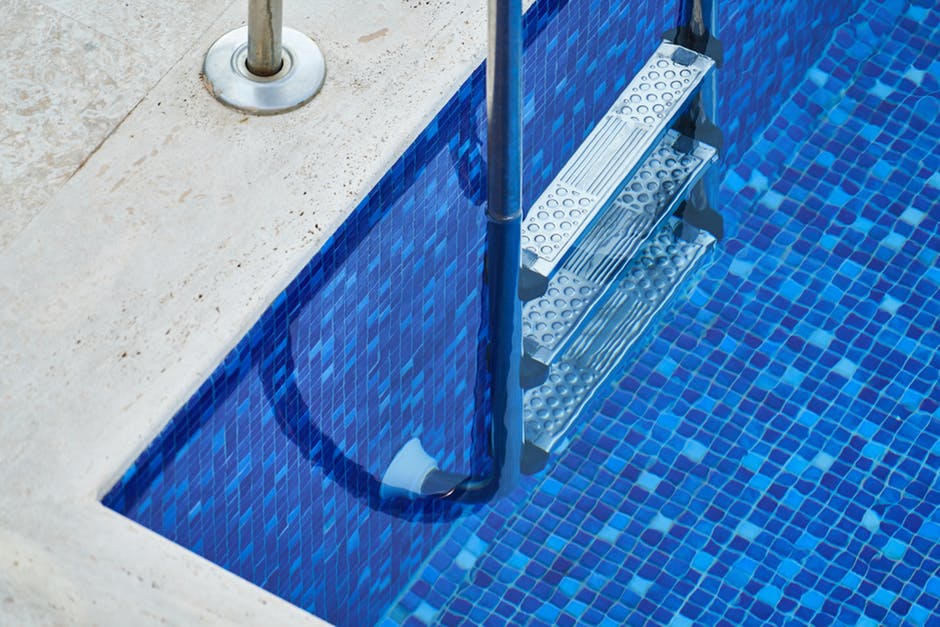Did you know that the average in-ground pool can cost you anywhere between $10,000 and $100,000? That’s a big investment! You’ll want to ensure that it stays in peak condition for as long as you can.
A good practice is pool leak detection, since it is one of the leading causes of further structural damage.
Even with a great pool contractor installing it, pools can eventually break down and leak. You’ll want to spot these leaks fast so you can bring back the professional and fix these problems before they get out of hand.
The following are some things you should do to detect pool leaks at its earliest stage. Learn to do them and your pool will last longer.
Pool Leak Detection: The Bucket Method
This method needs a 5-gallon plastic bucket, a king-size black marker, and duct tape. First, you need to place the empty bucket in the water around the second step of your pool. Try to fill the bucket with water, matching the water level of your pool.
As soon as you finish doing that, mark the level inside the bucket using either the duct tape or the marker. Turn off the recirculating pump and any of the auto-refill device your pool has. Wait for around 24 hours and compare the pool’s water level to that in the bucket.
If the water on the pool and bucket water went down but are of even level, the water loss is because of evaporation. Otherwise, if the pool’s water level is lower than the bucket’s, it’s likely to have leaks. To check the leak sources, repeat the test for another 24 hours, but this time you need to turn on the pump.
With the new results, check if the pool’s water level is higher while the water is circulating under the pressure. If this is the case, the leak may come from somewhere in the plumbing of your pool.
Pool Leak Detection: The Ink Method
This method allows you to find the source of the leak. You’ll need goggles that won’t leak or fog up, a snorkel, and leak finder dyes. If you don’t have dyes available, you can always use food coloring, as long as it’s dark-colored or red.
Start this process by draining the pool. It’s a tricky process since it will drain all the way if the leak is at the bottom of your pool. But if you think it’s coming from the pool walls, this is the best way of determining the source of the leak.
As soon as the pool stops draining, you’ll know it’s located somewhere along the wall—the point where it stops. After that, check the ground and walls around the pool area for wet spots. It helps you know the specific area where the leak originates.
Do your best to narrow it down before you use the dye to locate the leak. As soon as you get a proper estimate, jump into the pool and find its exact location using the dye. You can do this by squirting the dye in the water, somewhere close to the wall.
The dye will move towards the source of the leak because of the current. Approach the areas without disturbing the water too much. Otherwise, the dye will run wild.
How to Patch a Pool Leak
Once you find where the leak comes from, you now have the means of fixing it. Your best bet is to call a pool contractor to do it for you. But that isn’t possible, you need to take the matter into your own hands.
If you have a concrete pool that develops cracks, you need to patch it with plaster. But this process can become complicated, especially if you have no prior experience. That’s why a good substitute is to use vinyl liners instead.
The good news is that you’ll have an easier time finding a leak the smaller your pool is. But once you find it, you shouldn’t always need to replace the liner. Get vinyl liner patch kits since these often work underwater.
Using the Vinyl Liner Repair Kit
These kits often come with big sheets of either clear or blue vinyl. Cut them out to the shape of a big circle, ensuring that it’s larger than the area of the leak. The reason for the shape is because of its lack of corners, making it easier to pull up when using the pool.
Use the glue that came with the kit to cover the entire backside of the patch. If you aren’t underwater, apply the patch over the leak area. Put pressure on it for two minutes to let it settle.
Otherwise, fold the patch in half to reduce the glue’s contact with the water. Go to the leak area and open it up, applying it in one swift motion. Apply pressure to the patch and hold it for about 5 minutes.
Hire Professionals
When in doubt, hire professionals. You never know when you’ll run into problems too big to handle.
Keep in mind that professionals not only have the training but the right equipment, too. This guarantees they get the job done and they do it right.
It’s also safer with them handling the maintenance job – patching a leak might not sound dangerous but it can be. A quick slip could lead to a cracked skull. In fact, falls are among the leading causes of accidental death!
Get Pool Repairs Today!
Pool leak detection is one of the most important maintenance tasks you should do for your swimming pool.
A leaking pool will cost you money in the long run because of the water seepage. It will end up compromising the structural integrity of your pool, resulting in higher maintenance costs.
These tips are things you can do even without the help of an expert. But if you want an accurate means of detecting leaks and fixing them, get reliable pool contractors. You can contact us today and we’ll help you out with pool installation and maintenance.




